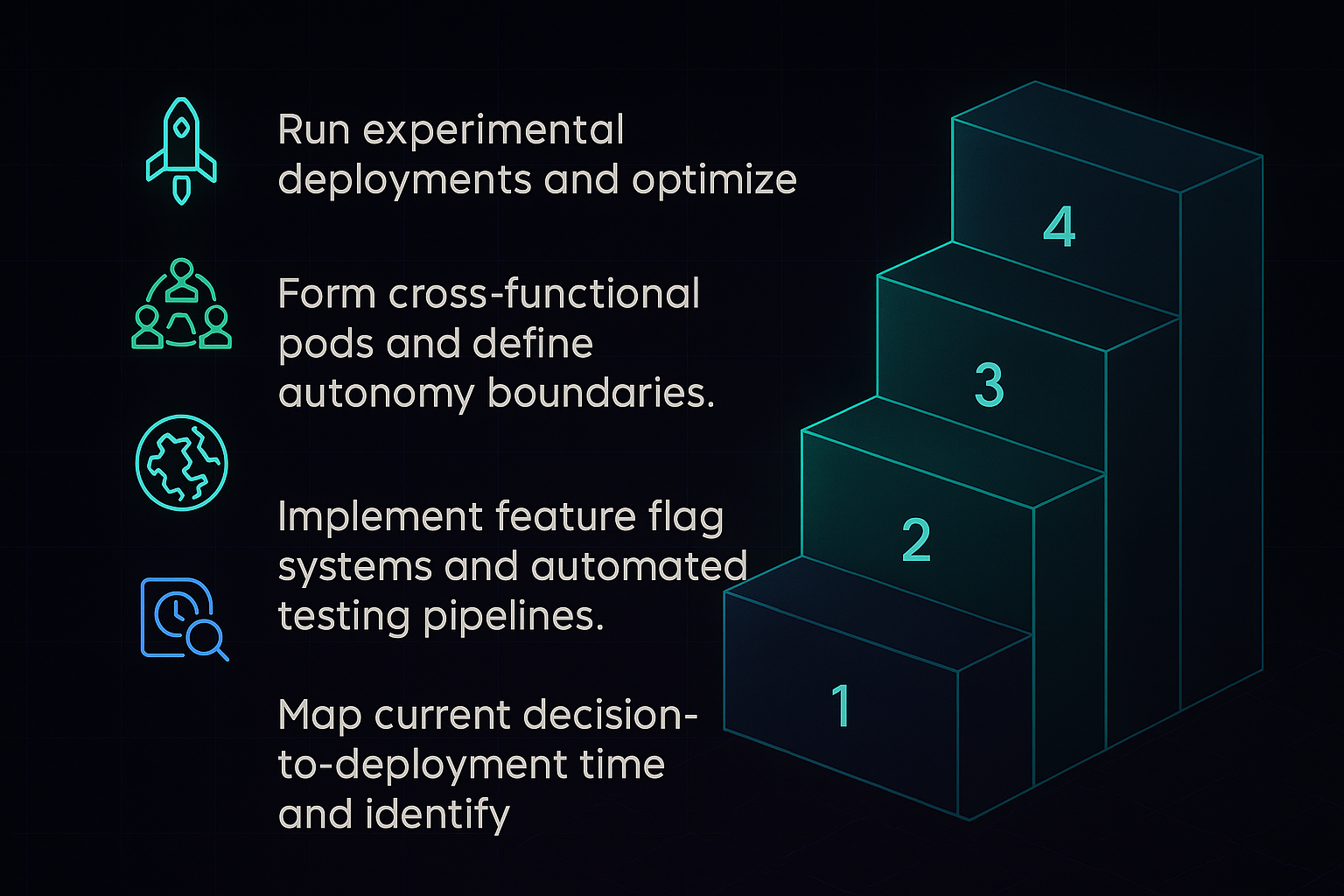Join our newsletter



Strategy builds momentum. Systems create emergence. Execution delivers velocity.
Here's what we've learned from 200+ AI implementations: 92% of teams can design exponential systems. Only 23% can execute them at scale.
The gap? Velocity engineering.
Most teams approach execution like construction: Plan → Build → Deploy → Optimize.
But exponential execution works more like jazz: Listen → Improvise → Harmonize → Accelerate.
The difference is profound. Linear execution assumes you know the destination. Exponential execution assumes you're discovering it.
Linear teams ship features. Exponential teams ship capabilities.
One delivers what was planned. The other unlocks what becomes possible.
Building exponential execution requires four velocity layers:
How fast can you detect what matters?
Traditional monitoring tracks what you think is important. Velocity sensing tracks what actually drives outcomes.
Example: A fintech app that monitors transaction patterns, user behavior, and market signals simultaneously. When crypto volatility spikes, the system automatically adjusts risk algorithms, notifies relevant users, and prepares additional support capacity.
How fast can you choose the right action?
This layer combines human judgment with AI assistance. The goal is high-quality decisions at machine speed.
Example: An e-commerce platform where AI analyzes inventory levels, demand patterns, and competitor pricing to suggest pricing adjustments. Product managers can approve, modify, or reject recommendations in real-time.
How fast can you make changes live?
Exponential teams can deploy improvements within hours, not sprints. This requires infrastructure that supports rapid, safe changes.
Example: A SaaS platform with feature flags, automated testing, and instant rollback capabilities. New algorithm improvements can be tested on 1% of users, validated, and scaled to 100% within the same day.
How fast can you improve based on results?
The fastest teams create feedback loops that operate in minutes, not months. Every action generates data that improves the next action.
Example: A content platform where AI analyzes engagement patterns, identifies successful content structures, and suggests optimization strategies that content creators can apply immediately.
Cross-functional pods replace traditional silos.
Each pod combines:
Autonomous decision-making replaces approval chains.
Teams have clear boundaries within which they can ship, experiment, and iterate without external approval.
Continuous deployment replaces release cycles.
Changes flow to production as soon as they're validated, not when calendars allow.

The patterns that separate exponential teams from linear ones:
Traditional metrics track output:
Velocity metrics track impact:
Teams implementing exponential execution report:
But the compound effect is where velocity really pays off.
Each improvement creates capacity for more improvements. Each successful experiment enables bigger experiments. Each faster decision makes the next decision easier.
Ready to engineer exponential execution?
Start with your highest-impact bottleneck:
Focus on one constraint. Apply velocity principles. Measure the acceleration.
Then scale the pattern across your entire execution engine.
Build sensing first. Enable fast decisions. Create deployment velocity. Accelerate learning.
Then watch what happens when execution becomes exponential.
Let's build systems that don't just work fast. They accelerate.
→ Ready to unlock exponential execution? Let's talk